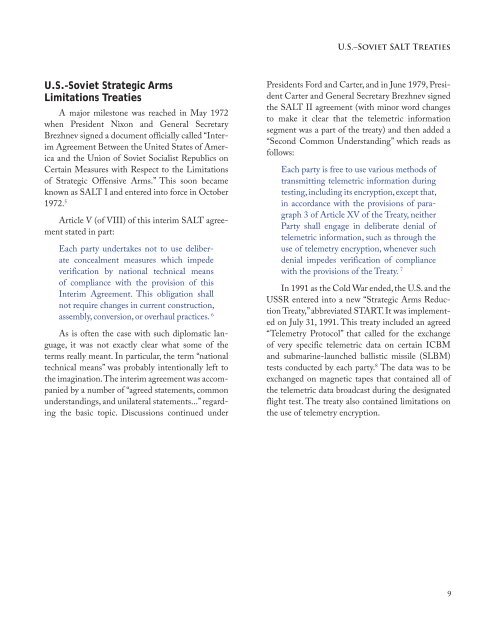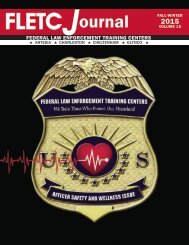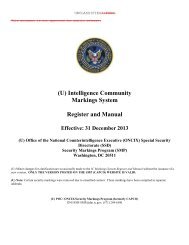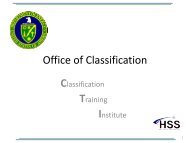Telemetry Intelligence (TELINT) During the Cold War
telint-9-19-2016
telint-9-19-2016
Create successful ePaper yourself
Turn your PDF publications into a flip-book with our unique Google optimized e-Paper software.
U.S.–Soviet SALT Treaties<br />
U.S.–Soviet Strategic Arms<br />
Limitations Treaties<br />
A major milestone was reached in May 1972<br />
when President Nixon and General Secretary<br />
Brezhnev signed a document officially called “Interim<br />
Agreement Between <strong>the</strong> United States of America<br />
and <strong>the</strong> Union of Soviet Socialist Republics on<br />
Certain Measures with Respect to <strong>the</strong> Limitations<br />
of Strategic Offensive Arms.” This soon became<br />
known as SALT I and entered into force in October<br />
1972. 5<br />
Article V (of VIII) of this interim SALT agreement<br />
stated in part:<br />
Each party undertakes not to use deliberate<br />
concealment measures which impede<br />
verification by national technical means<br />
of compliance with <strong>the</strong> provision of this<br />
Interim Agreement. This obligation shall<br />
not require changes in current construction,<br />
assembly, conversion, or overhaul practices. 6<br />
As is often <strong>the</strong> case with such diplomatic language,<br />
it was not exactly clear what some of <strong>the</strong><br />
terms really meant. In particular, <strong>the</strong> term “national<br />
technical means” was probably intentionally left to<br />
<strong>the</strong> imagination. The interim agreement was accompanied<br />
by a number of “agreed statements, common<br />
understandings, and unilateral statements...” regarding<br />
<strong>the</strong> basic topic. Discussions continued under<br />
Presidents Ford and Carter, and in June 1979, President<br />
Carter and General Secretary Brezhnev signed<br />
<strong>the</strong> SALT II agreement (with minor word changes<br />
to make it clear that <strong>the</strong> telemetric information<br />
segment was a part of <strong>the</strong> treaty) and <strong>the</strong>n added a<br />
“Second Common Understanding” which reads as<br />
follows:<br />
Each party is free to use various methods of<br />
transmitting telemetric information during<br />
testing, including its encryption, except that,<br />
in accordance with <strong>the</strong> provisions of paragraph<br />
3 of Article XV of <strong>the</strong> Treaty, nei<strong>the</strong>r<br />
Party shall engage in deliberate denial of<br />
telemetric information, such as through <strong>the</strong><br />
use of telemetry encryption, whenever such<br />
denial impedes verification of compliance<br />
with <strong>the</strong> provisions of <strong>the</strong> Treaty. 7<br />
In 1991 as <strong>the</strong> <strong>Cold</strong> <strong>War</strong> ended, <strong>the</strong> U.S. and <strong>the</strong><br />
USSR entered into a new “Strategic Arms Reduction<br />
Treaty,” abbreviated START. It was implemented<br />
on July 31, 1991. This treaty included an agreed<br />
“<strong>Telemetry</strong> Protocol” that called for <strong>the</strong> exchange<br />
of very specific telemetric data on certain ICBM<br />
and submarine-launched ballistic missile (SLBM)<br />
tests conducted by each party. 8 The data was to be<br />
exchanged on magnetic tapes that contained all of<br />
<strong>the</strong> telemetric data broadcast during <strong>the</strong> designated<br />
flight test. The treaty also contained limitations on<br />
<strong>the</strong> use of telemetry encryption.<br />
9








